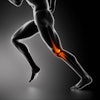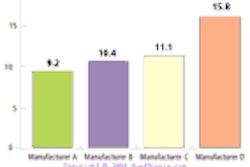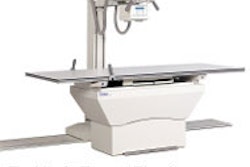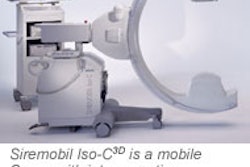Although there have been recent declines in heart disease mortality rates, cardiac disease remains the leading cause of death in the U.S. Now PET/CT is showing promise as a fast, accurate, noninvasive, and lower-risk method of diagnosing coronary artery disease, according to Swiss researchers.
A team from the department of nuclear cardiology at University Hospital in Zurich evaluated the image quality of a PET/CT scanner for combined acquisition of coronary anatomy and myocardial perfusion. They presented their research at the 2004 Society of Nuclear Medicine meeting in Philadelphia.
"The goal of our study was to evaluate the feasibility and image quality of a combined acquisition of coronary anatomy and perfusion with an integrated PET/CT scanner," said presenter Dr. Patrick Siegrist.
The group studied 25 consecutive patients (22 males and three females, mean age 62 years) with angiographically documented coronary artery disease in patients referred to their PET center for evaluation of ischemia. In each patient the group analyzed four vessel segments: left main coronary artery, left anterior descending, left circumflex, and right coronary artery, which gave them a total of 100 vessel segments, Siegrist said.
The scans were performed on a Discovery LS PET/CT (GE Healthcare, Waukesha, WI), an integrated four-slice LightSpeed Plus CT system and an Advance PET scanner. The PET scans took 60 minutes per patient, while the CT scans were performed in two to three minutes, according to Siegrist.
CT angiography (CTA) was performed with retrospective ECG gating after injecting 120 mL of contrast media intravenously. Myocardial perfusion was assessed with 13N-ammonia (800 MBq) at rest and during adenosine stress, Siegrist noted.
"Two-dimensional curved reformatted images were reconstructed individually for each coronary artery for lesion analysis," he said.
The entire coronary tree could be visualized in all patients up to the mid-segment using CTA. Its sensitivity and specificity compared with coronary angiography were 90% and 76%, respectively. The researchers reported that of the 15 false-positive segments indicated by CTA, 13 were correctly identified as normal by PET.
"Coronary angiography identified 35 stenotic lesions as compared to 42 with CTA," he said.
"Of the 14 lesions without patent bypass graft, PET revealed stress-induced ischemia in seven lesions in six patients, preventing the remaining eight patients from the financial and physical burden of a futile revascularization," Siegrist said.
Sensitivity and specificity levels of 90% and 98%, respectively, were reported for the 13N-ammonia myocardial perfusion assessments of the patients. The positive and negative predictive values for the procedures were 82% and 98% respectively, according to Siegrist.
PET/CT was determined to be more reliable and effective for the diagnosis of coronary artery disease when compared with a coronary angiogram and more accurate than a CTA alone. However, the implications of using PET/CT for evaluating patients with CAD are still being assessed.
"In the medical community, we are always looking for new ways to approach old problems," commented Dr. Mehdi Namdar, one of the study's co-authors. "Anytime you avoid invasive procedures without sacrificing accuracy or increasing risk, you're doing a great service to the patient. In the case of the combined PET/CT scanner, we have found a very accurate method of diagnosing potential heart risks that is much easier on the patient."
By Jonathan S. Batchelor
AuntMinnie.com staff writer
August 13, 2004
Related Reading
Multislice CT helps spot coronary artery lesions, June 30, 2004
PET/CT improves noninvasive diagnosis of cardiovascular disease, May 5, 2005
Myocardial perfusion imaging shows promise in first-time heart failure, March 9, 2004
FDG uptake may prove less stressful for pinpointing ischemia, March 9, 2004
New guidelines address cardiac nuclear imaging, August 19, 2003
Copyright © 2004 AuntMinnie.com



















